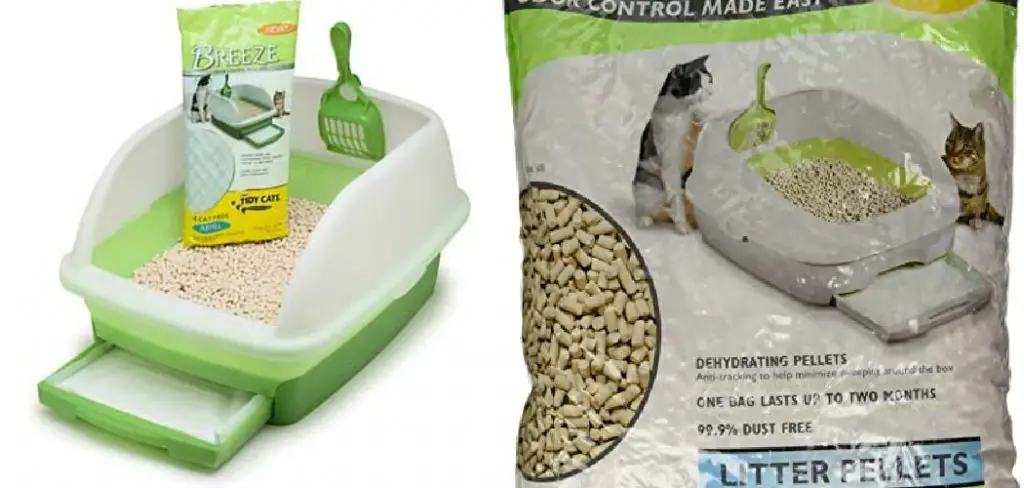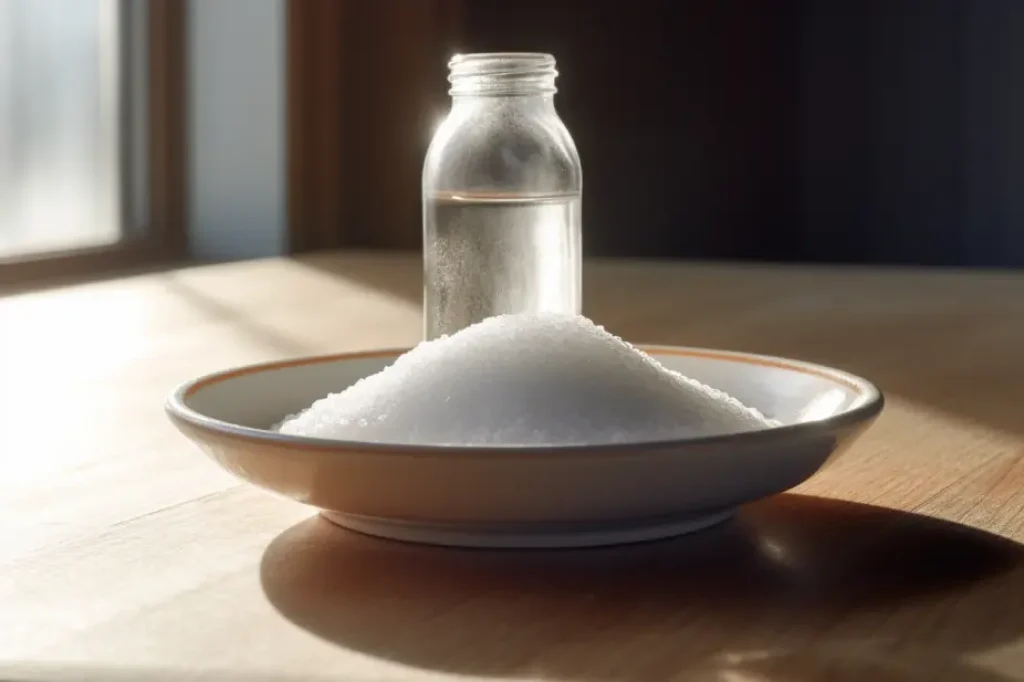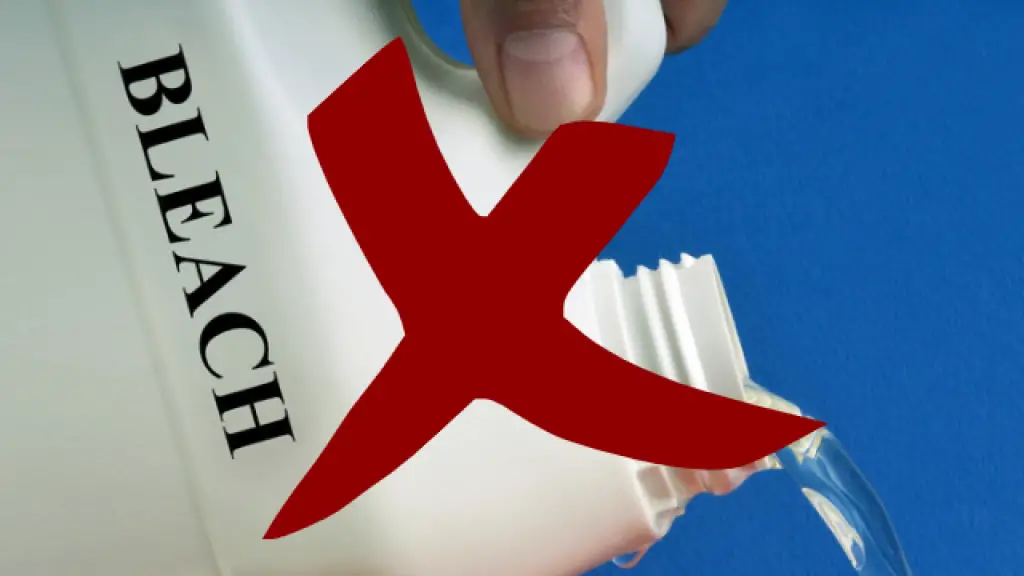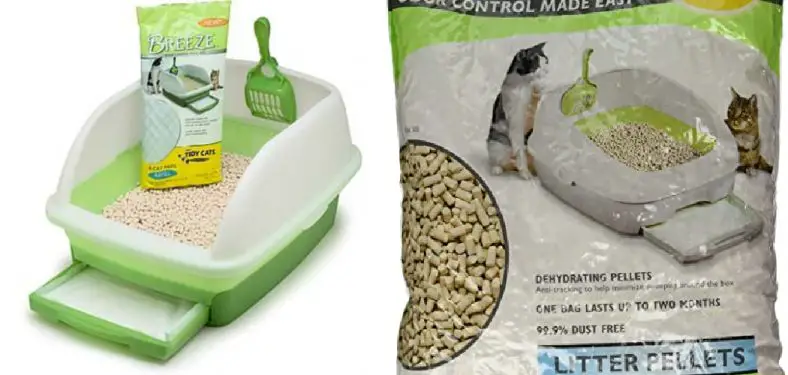Welcome to the wonderful world of feline hygiene! If you’re a cat parent, you already know how crucial a clean and odor-free environment is for your furry friend’s health and happiness.
Not to mention your own peace of mind. If you’re using Breeze Pellets, then you are well aware of the magic they work in taming the notorious “cat litter odor”.
But did you know you could wash and reuse these tiny miracle workers? In this blog, we will delve into the lesser-known realm of washing Purina Tidy Cats Breeze pellets and making the most out of them.
So, buckle up, because we’re about to make your Breeze journey a whole lot breezier.
Contents
Understanding Breeze Pellets
Let’s take a moment to appreciate the science behind Breeze Pellets. These aren’t just any random bits of litter.
No, these are thoughtfully engineered mordenite zeolite pellets, a hard mineral that boasts a remarkable capacity to absorb ammonia, making them the unsung heroes of our cats’ litter boxes.
Originally used in freshwater aquariums and koi ponds to tackle ammonia, these pellets have been repurposed by Purina for our kitties’ needs. It’s an ingenious solution that helps us pet owners tackle that all-too-familiar ammonia scent.

Why Consider Washing Breeze Pellets?
Now you may be thinking, “Why should I wash my Breeze Pellets?” Well, beyond the obvious cost-saving advantage, washing and reusing these pellets is a small but significant way we can reduce waste and play our part in environmental conservation.
While we will lose some pellets to attrition (around 5% during the washing process, based on user experience), the savings in terms of money and environmental footprint make it a worthy endeavor.
But don’t just take our word for it; in this comprehensive guide, we’ve compiled experiences and recommendations from fellow pet parents who have successfully ventured down this path.
Stay tuned as we dive into different methods to wash and recharge your Breeze Pellets, mistakes to avoid, and user experiences highlighting the good, the bad, and the dusty.
From the soaking method, soap and soaking, washing machine, to the innovative “recharging” using a salt solution, we have got it all covered. By the end of this guide, you’ll be a Breeze Pellets washing pro!
Methods to Wash and Reuse Breeze Pellets
Now, let’s get down to the nitty-gritty of washing and recharging your Breeze Pellets. Remember, our goal here isn’t just to clean the pellets; we also need to rejuvenate their ammonia-absorbing abilities.
Below, we have rounded up some of the tried-and-tested methods from the cat-loving community.
The Soaking Method with Water
This is the simplest method you could possibly employ. Here’s how to do it: First, soak the used pellets in water for some time, then drain the water and repeat the process a few times. The aim is to get rid of the trapped urine. Once you’re confident they are clean, put them in a mesh laundry bag and lay it out in the sun to dry. The UV rays from the sun work wonders in disinfecting and deodorizing the pellets.
The Soap and Soaking Method
Take your cleaning process a notch higher by introducing soap into the equation. Remember, it’s essential to use a safe soap (Dr. Bronner’s is a fan favorite, but dishwashing soap or even shampoo could work). Soak the used pellets in soapy water overnight, stirring occasionally. The next day, thoroughly rinse the pellets with clean water (a garden hose works wonders for this step). Finally, spread them out on a tray or a pan to dry, ensuring to facilitate their gathering once they’re dry.
Washing Machine Method
Before you get excited about this method, it’s important to know that it has been met with mixed results. Some users reported that the pellets significantly reduced in size after a gentle wash cycle, with a lot of pellet dust left behind. As such, we recommend proceeding with caution if you’re considering this method.
In the quest for the most efficient method of refreshing our Breeze pellets, some of us might think: “Why not give the washing machine a spin?” Let’s delve into this method and see how it pans out:
Materials and Procedure:
- A handful of used Breeze pellets
- A zip-up pillowcase or mesh laundry bag
- A washing machine
Initially, the used pellets are put into a zip-up pillowcase or mesh laundry bag. This step ensures the pellets are safely contained during the wash. Once securely fastened, the bag is tossed into the washing machine. The ‘gentle’ cycle is the preferred setting to avoid any excessive wear on the pellets.
Outcome:
Regrettably, the results of this method are less than satisfactory. When the pillowcase is retrieved from the machine after the cycle, a coating of dust signals that the pellets suffered a hit during the wash.
Moreover, the pellets suffer significant shrinkage – many measure only a third of their initial size. This drastic size reduction impacts the efficacy of the pellets in their prime role – odor control and absorption. Consequently, it also leads to a considerable loss of material, negating any cost advantages we might hope to gain through washing and reusing the pellets.
Following this less than successful trial, the cat owner decided to revert to purchasing new pellets, given the poor performance of the washing machine method.
While it’s always worthwhile to explore ways to reuse and recycle, not all methods will yield the results we desire. It’s important to scrutinize the effectiveness of each method and consider its impact on the overall performance and longevity of the Breeze pellets. Thus, tread carefully if you decide to give your washing machine a whirl for this task!
The “Recharging” Method Using a Salt Solution
The recharging method is akin to giving your pellets a new lease of life. The goal is to release the absorbed ammonia from the pellets, restoring their functionality. Soak the used pellets in a 5% table salt solution (that’s about 4 tbsp of salt per 1 gallon of water) for a minimum of 9 hours, although 24 hours is ideal. After the soak, rinse the pellets and let them dry before reusing.

Each of these methods has its own set of pros and cons. But as we always say in the cat world, trial and error is your best friend. Don’t be afraid to experiment and find the method that best suits you and your feline companion’s needs.
In the next section, we’ll be detailing a step-by-step guide to washing and reusing Breeze Pellets. You’ll also get some handy tips on handling reduced size and broken pellets, alternative drying options, and essential considerations for each step. So, stay tuned!
Detailed Step-by-Step Guide to Wash and Reuse Breeze Pellets
Alright, let’s delve into the actual process of washing and reusing Breeze pellets. We’ll base our guide on the most preferred method – the soap and soaking method, while also integrating useful tips from the other methods.
Materials You’ll Need:
- Used Breeze Pellets
- Bucket or large bowl
- Safe soap (Dr. Bronner’s, dishwashing soap, or shampoo)
- Old colander or a mesh laundry bag
- Tray or pan for drying
- Optional: Hose for rinsing
Steps to Follow:
- Preparation: Collect the used pellets and put them into your bucket or large bowl.
- Soaking: Add water and a small amount of your chosen safe soap. Stir the mixture to ensure all pellets come into contact with the soapy water.
- Extended Soak: Leave the pellets to soak overnight. This gives the soap ample time to break down any grime and odors.
- Rinse: The following day, pour the soaked pellets into an old colander or a mesh laundry bag and rinse them thoroughly. If you have a garden hose, use it to ensure a thorough rinse.
- Dry: Spread the rinsed pellets out on a tray or pan to dry. It’s best to place this in a sunny location for natural disinfection and deodorization. However, if you don’t have access to a sunny location, consider using an oven or blow dryer. Ensure the pellets are completely dry before reusing them to prevent mold growth.
- Storage: Once the pellets are absolutely dry, store them in a bucket or similar container until it’s time to change the litter box again.
Additional Tips:
- Handling reduced size and broken pellets: During the washing process, some pellets may reduce in size or break. To prevent these smaller pellets from getting stuck in the Breeze system, consider using them in a traditional litter box or dispose of them.
- Recharging your pellets: To further enhance the lifespan of your pellets, consider the ‘recharging’ method. Soak your pellets in a 5% table salt solution for 9-24 hours before the rinsing step. This can help to rejuvenate the ammonia-absorbing properties of the pellets.
- Avoid long soaking times: While soaking is crucial, overly long soaking times can lead to disintegration. Aim to soak the pellets for no longer than 24 hours.
This detailed guide should provide you with all the know-how to wash and reuse Breeze pellets successfully. Remember, the goal is not just cleanliness, but also to maintain their ability to control odors.
In the next section, we’ll dive into some common mistakes to avoid during this process. These are crucial to ensure the longevity and effectiveness of your Breeze pellets. So, let’s keep going!
Common Mistakes to Avoid
When washing and reusing your Breeze pellets, there are a few pitfalls you need to steer clear of. The process might seem straightforward, but some missteps could endanger both your pet’s health and the effectiveness of the pellets. Let’s dive into these common mistakes and how to avoid them.

- Using Strong Chemicals or Bleach: It might be tempting to use potent cleaners to ensure your pellets are squeaky clean, but these can be harmful. Bleach and other strong chemicals can be toxic to pets and, moreover, bleach can react with the ammonia in cat urine to produce harmful fumes. Stick to mild, pet-safe detergents and soaps for cleaning.
- Choosing the Wrong Cleaning Agents: Some cleaning products, like Pine-Sol, may strip away the odor-control properties of the pellets, rendering them less effective. Also, certain soaps can cause the pellets to shrink or disintegrate, especially when used in a washing machine.
- Long Soaking Times: While overnight soaking is recommended, leaving the pellets to soak for too long can cause them to disintegrate and reduce in size. Keep your soaking time under 24 hours to avoid this issue.
- Not Ensuring Complete Drying: This is a crucial step. If the pellets are not completely dry before being reused, they can encourage the growth of mold and bacteria, which can be harmful to your cat and reduce the effectiveness of the pellets. Whether you’re sun-drying or using a blow dryer or oven, ensure the pellets are thoroughly dry before storing or reusing them.
By avoiding these common mistakes, you’re on your way to effectively reusing your Breeze pellets, saving money, and doing your part for the environment.
In our next section, we’ll weigh up the pros and cons of washing and reusing Breeze pellets. Stay tuned!
Pros and Cons of Washing Breeze Pellets
Now that you’ve mastered the steps and learned about the pitfalls, let’s analyze the benefits and potential downsides of washing and reusing Breeze pellets. Just like any other process, it has its highs and lows, and understanding these will help you make an informed decision.
Pros
- Cost-Effective: Washing and reusing pellets can significantly cut down your expenses on cat litter. If you’re a cat owner, you know that costs can add up quickly, so finding areas to save can be beneficial.
- Environmentally Friendly: By reusing the pellets, you’re reducing waste and your environmental impact. It’s a small change, but every little bit helps when it comes to preserving our planet.
- Odor Control: Breeze pellets are known for their ability to absorb and control ammonia odor, making your litter box more bearable. By recharging the pellets, you’re prolonging their life and their odor control capabilities.
- Reduced Need for Additional Products: Many users have reported a reduced need for air fresheners, litter-catching carpets, and deodorizing tricks, resulting in further savings.
Cons
- Time and Effort: Washing and reusing Breeze pellets requires time and effort. It might not be an ideal solution for everyone, especially if you’re pressed for time or have multiple cats.
- Potential for Mistakes: As outlined in our common mistakes section, there are potential hazards and pitfalls that you need to avoid. Using the wrong cleaning agents or not drying the pellets properly can lead to ineffective pellets or even health risks for your cat.
- Pellet Attrition: Pellets can break down over time, especially with repeated washing. This means you’ll still need to buy new pellets periodically.
By weighing these pros and cons, you can decide if washing and reusing Breeze pellets is the right choice for you and your feline friends.
FAQs
Can I wash and reuse other types of cat litter apart from Breeze Pellets?
This guide is specifically for washing and reusing Breeze Pellets. Different types of cat litter are made from various materials, each with its own characteristics. Some types of cat litter may not be safe or effective to wash and reuse. Always research thoroughly or consult with a pet care expert before attempting to wash and reuse any other type of cat litter.
Is it safe to wash Breeze Pellets in a dishwasher?
This guide does not recommend using a dishwasher to clean Breeze Pellets. The hot water and intense washing cycle may cause the pellets to disintegrate. Also, residue from the pellets or any trapped urine might damage your dishwasher or leave unpleasant odors.
What are the signs that my Breeze Pellets need replacing rather than washing and reusing?
If the pellets have significantly reduced in size, are disintegrating, or if you notice that they’re no longer effectively controlling odors, it’s probably time to replace them instead of reusing them. It’s always best to keep a close eye on the effectiveness of your pellets to determine when they need replacing.
How often should I wash my Breeze Pellets?
The frequency of washing and reusing Breeze Pellets will depend on your cat’s usage and the odor control effectiveness of the pellets. Monitor your cat’s litter box and the odor levels to decide the best washing schedule.
Can I reuse the Breeze Pellets indefinitely?
No, the Breeze Pellets will eventually wear out and lose their effectiveness, even with washing and reusing. While this guide can extend their life, it won’t make them last indefinitely.
Are there any potential health risks for my cat if I improperly wash and reuse Breeze Pellets?
Yes, there can be potential health risks for your cat if the pellets are not properly washed and dried. For example, if the pellets are not thoroughly dried, they can encourage the growth of mold and bacteria, which can harm your cat. Always make sure to follow the washing and drying steps carefully to ensure your cat’s safety.
After All is Said and Done…
The simple act of washing and reusing Breeze pellets can be a game-changer for many cat owners. It not only saves money but also contributes to a more sustainable lifestyle, lessening our environmental paw-print, if you will.
However, as we’ve seen, it’s not as simple as dunking them in water and calling it a day. It requires understanding the specific nature of these pellets, taking the time to execute the process properly, and being alert to potential pitfalls along the way.
Remember, your efforts can lead to a cleaner, fresher environment for your feline friends and yourself. Be patient, follow the steps carefully, and you’ll soon become a pro at it.
But also keep in mind the golden rule: the health and well-being of your pets always come first. If you notice anything amiss, don’t hesitate to seek advice from a vet or a pet care expert.
We hope this comprehensive guide has helped you understand the process of washing and reusing Breeze pellets, and we’re confident that with a bit of practice, you’ll master the art in no time. Happy pellet washing!
And as always, we’re here to help. If you have any questions or need further clarifications, don’t hesitate to drop us a line. We’re all in this together, learning and growing in our journey of providing the best for our furry friends.

